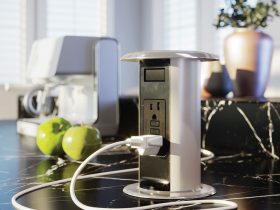Introduction
The National Electrical Code (NEC), sometimes referred to as NFPA 70, is the preeminent code covering electrical installations in the United States and in many other countries. Section 90-1(b) of the 1999 edition says:
(b) Adequacy. This Code contains provisions that are considered necessary for safety. Compliance therewith and proper maintenance will result in an installation that is essentially free from hazard but not necessarily efficient, convenient or adequate for good service or future expansion of electrical use.
It is important to note that 90-1(b) says that proper maintenance is necessary for continued safety. Just how is the maintenance to be performed? Also, how often should it be performed? In many cases, the method and procedure for proper maintenance is described elsewhere.
The National Fire Protection Agency (NFPA) publishes the Standard for Health Care Facilities, NFPA-99, which specifically describes the maintenance and testing of various pieces of electrical equipment. This article will present methods and explanations about receptacle testing in patient care areas.
Why Test?
Section 3-3.3 of NFPA 99 (1999 edition) covers performance criteria and testing. Clause A-3-3.3.2.1 is a 2½- page explanation of grounding system testing and is well worth reading for additional understanding. Essentially, a low impedance ground path will help ensure the rapid breaking of a circuit by the overcurrent protective device when a large ground fault occurs. It also helps reduce the voltage that may appear on the metal housings or frames of grounded appliances. Since the total ground path comprises many elements, there are various methods for testing these elements. One of the elements in the grounding path is the interface between the grounding contact of a receptacle and the ground pin of the plug. This could be a weak link in the grounding chain of cord-connected equipment and should be tested regularly. Impedance measurements are described in detail for some of the ground path elements, however the plug to receptacle interface is checked by measuring retention force.
Clause 3-3.3.3(d) of NFPA 99 says:
The retention force of the grounding blade of each electrical receptacle (except locking-type receptacles) shall not be less than 115 g (4 oz).
If a jurisdiction or health care facility adopts NFPA 99, an accurate and repeatable way to measure receptacle retention force is necessary.
The Testers
This writer is aware of two hand-held devices that are commercially available to do the job. There are multi-function testers that incorporate retention testing features as well as a variety of force gages that can be adapted for retention testing use. The two testers shown in photo 1 are designed only for outlet retention testing. The smaller tester is a spring scale device containing moving indicators and a printed scale indicating ounces of retention force. The larger tester contains an electronic strain gage and a digital readout indicating ounces and tenths of an ounce. Both testers are small enough to carry in an ordinary toolbox and are intended for hand use. With both testers, the device is inserted into the receptacle and slowly withdrawn. The retention force is read on the scale or digital readout of the tester. Both testers can test the power contacts of a receptacle as well, by using the appropriate tester blade(s).
The digital tester is Listed by Underwriters Laboratories (UL) while the spring scale device is not. It is important to note that Listed testers undergo a rigorous testing regimen by UL to ensure accuracy and long life. The details of the test program are worth summarizing to understand the necessity of using a listed tester or one that meets the requirements of the UL Standard.
Test Program
UL-1436, the Standard for Outlet Circuit Testers and Similar Indicating Devices contains both construction and performance requirements for Retention Testers. The following summary of some of the tests and requirements will make clear the importance of using a tester that meets the UL requirements.
Paragraph 11.6 of UL-1436 requires that the ground pin shall have a hardness of Rockwell C28 or the equivalent. Since this is much harder than the brass grounding contacts in most receptacles, the pin is not likely to wear out rapidly.
Paragraph 11.8 requires that the scale indicating retention force be calibrated and have 0.5 ounce graduations. This is necessary to ensure an accurate measurement.
Paragraph 11.10 requires that a calibration tool be required with the tester for periodic verification of the device’s indicated values. An example of a calibration tool is an accurate check weight that is supplied with the strain gage tester. The tester is positioned to suspend the weight, thus checking the tester’s accuracy.
Paragraph 16.1 requires that the tester withstand a crushing force of 75 lb. (334N) when compressed between two hard maple blocks of wood. As indicated in paragraph 18.2, the tester must survive a drop test from 5 feet (1.52m). Even the calibration weight must pass a drop test.
Some of the most critical tests and requirements concern the accuracy of the retention tester and are contained in section 23 of the Standard. Basically UL requires that the tester have an accuracy of 2.5%. More importantly, UL further requires that the tester must maintain its accuracy after 100,000 cycles of endurance. That means the mechanism of the tester is exercised 100,000 times and the tester must maintain its 2.5% accuracy. This is very important if accurate measurements are to be made.
Conclusion
The NFPA-99 Handbook (1999 edition) states in the explanatory material for clause 3-3.3.3, that the former Technical Committee on Safe Use of Electricity in patient care areas has considered 4 ounces as a reasonable safety factor in deciding when to change a receptacle. Some may feel that 4 ounces is not much when compared to newer receptacles where ground pin retention can be 30 to 50 ounces. Whatever value you decide upon, be sure to use a tester that is accurate and robust enough to provide meaningful results for a good long time.














Find Us on Socials